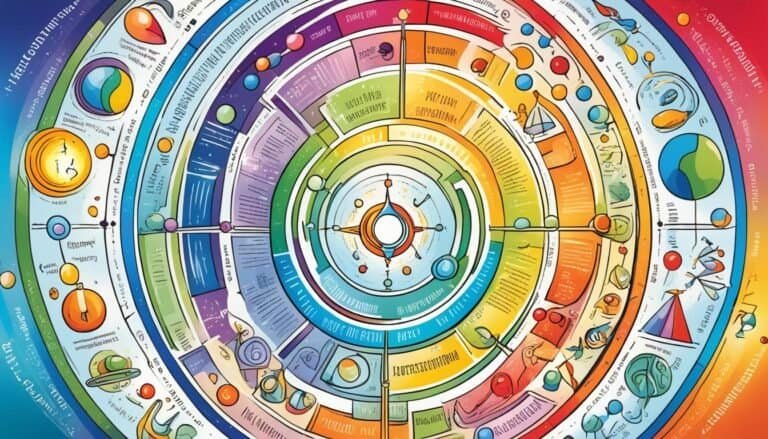Effective Negotiation: Insights from Roger Fisher
|
Getting your Trinity Audio player ready...
|
“The reason we sometimes reach impasse is that one of us wants something that the other sees as incompatible with us getting what we want, unless we give in. We are thus caught in a web of mutual frustration and negative projection.”
In the world of negotiation, conflicts and disagreements are inevitable. However, the key to successful negotiation lies in finding a mutually beneficial solution without compromising one’s own interests. When it comes to mastering the art of negotiation, there are few individuals as renowned as Roger Fisher, co-author of the influential book “Getting to Yes: Negotiating Agreement Without Giving In”. Fisher’s insights and strategies provide a blueprint for effective negotiation, conflict resolution, and the creation of win-win agreements.
Key Takeaways:
- Separating people from the problem helps preserve relationships and fosters positive communication.
- Focus on interests rather than positions to explore creative solutions and achieve mutually beneficial outcomes.
- Generating multiple options encourages flexibility and leads to innovative agreements.
- Insisting on objective criteria ensures fairness and rational decision-making.
- Active listening and understanding lay the foundation for effective communication and collaboration.
Separating People and Issues
Fisher and Ury stress the significance of separating people from the issues in a negotiation. This approach not only prevents personal attacks but also helps maintain a positive and constructive relationship between the parties involved. In any negotiation, it’s important to address the people problems separately from the substantive issues at hand.
Three common people problems that often arise in negotiations include differences in perception, emotions, and communication. These factors can complicate the negotiation process and make it challenging to reach a mutually beneficial agreement.
To overcome these obstacles, it is crucial for negotiators to:
- Understand the other party’s viewpoint: By actively listening and empathizing with the other side, negotiators can gain a deeper understanding of their concerns and motivations. This helps create an atmosphere of mutual trust and respect, paving the way for productive discussions.
- Manage emotions: Emotions often run high during negotiations, and they can cloud judgment and hinder effective communication. By acknowledging and managing their own emotions and encouraging emotional expression in a respectful manner, negotiators can address the underlying concerns and move towards a resolution.
- Promote active communication: Open and transparent communication is key to overcoming misinterpretations and misunderstandings. By encouraging active listening, asking clarifying questions, and providing clear explanations, negotiators can foster effective communication that promotes understanding and cooperation.
By separating people from the issues and addressing the people problems with empathy, emotional intelligence, and effective communication, negotiators can create an atmosphere conducive to successful negotiations.
“Separating people from the problem is the key to successful negotiations. By understanding each party’s perspective, managing emotions, and promoting open communication, negotiators can overcome obstacles and find common ground.”
Focus on Interests
In the negotiation process, it is crucial to focus on interests rather than positions. “Getting to Yes” emphasizes the significance of identifying the underlying interests of both parties involved in a negotiation. By understanding these interests, negotiators can find common ground and explore options that satisfy everyone’s needs. This approach promotes value creation and aims for a win-win outcome, unlike a zero-sum game where one party wins at the expense of the other.
“Negotiation is not about arguing over positions; it’s about uncovering interests.”
When we focus on positions, we tend to become entrenched in rigid stances that hinder collaboration. On the other hand, understanding interests allows us to see the bigger picture and seek creative solutions. By stepping away from fixed positions and looking at the underlying motivations, negotiators can find innovative ways to meet the needs of all parties involved.
For example, consider a negotiation between a landlord and a tenant regarding a lease agreement. The landlord’s position may be to increase the rent, while the tenant’s position may be to keep it as low as possible. However, by focusing on their interests, they may discover that the landlord wants to maintain a stable rental income to cover maintenance costs, while the tenant wants affordable housing in a convenient location. With this shared understanding, they can explore options such as a longer-term lease with incremental increases or cost-sharing arrangements that satisfy both parties.
Creating Value through Interest-Focused Negotiation
By focusing on interests, negotiators can create value that goes beyond mere compromise. This value creation is based on the understanding that satisfying the underlying interests of both parties can lead to better outcomes. When negotiators are open to exploring and understanding each other’s interests, they enable the generation of options that maximize mutual gains.
An interest-focused negotiation approach is particularly effective in complex business deals, where both parties have different priorities and goals. By acknowledging and delving into these interests, negotiators can collaborate to find innovative solutions that meet their objectives. This approach paves the way for building long-term relationships and establishes a foundation of trust and understanding.
Example: Max and Mia’s Business Partnership
Max and Mia are considering entering into a business partnership. Max’s main interest is to expand the company’s market presence, while Mia is more concerned about maintaining work-life balance. Instead of fixating on their initial positions, they focus on their interests and engage in a conversation to identify possible win-win solutions. Through dialogue and mutual understanding, they come up with a plan where Max can focus on expanding the business while Mia oversees the development of flexible work arrangements. By aligning their interests and finding synergy, they create a mutually beneficial partnership.
If You Liked This, Read: “Achieving Win-Win Outcomes: The Power of Interest-Based Negotiation”
To delve deeper into the concept of interest-based negotiation and its practical application, check out our article “Achieving Win-Win Outcomes: The Power of Interest-Based Negotiation.” Discover real-world examples and learn strategies for harnessing the power of interests to create successful, mutually satisfying agreements.
Generate Multiple Options
The negotiation process often requires more than just settling for the first solution that comes to mind. Instead, negotiators should embrace the power of brainstorming and creativity to generate multiple options.
By engaging in brainstorming sessions, negotiators can tap into their collective knowledge and experience to explore innovative solutions. This approach encourages thinking outside the box and considering alternative perspectives.
“The beauty of brainstorming is that it allows us to break free from the constraints of conventional thinking and explore new possibilities.” – Roger Fisher
By generating multiple options, negotiators increase their chances of finding solutions that address the unique concerns of all parties involved. This promotes a more inclusive and collaborative negotiation process, facilitating the creation of mutually beneficial agreements.
Flexibility is a key ingredient in generating multiple options. Negotiators who are open to different proposals and approaches demonstrate a willingness to adapt and find creative solutions. This flexibility enhances the overall negotiation strategy and encourages the exploration of unconventional yet effective paths to agreement.
In summary, the practice of generating multiple options through brainstorming and embracing creativity and flexibility is crucial for negotiators. By exploring a range of possibilities, negotiators can unlock innovative solutions and increase the likelihood of reaching mutually beneficial agreements.
Insist on Objective Criteria
In negotiations, the decision-making process can often be clouded by personal biases and subjective judgment. To overcome these challenges and ensure fairness, it is essential to insist on objective criteria. By utilizing impartial and well-defined standards, negotiators can create a rational and unbiased framework that facilitates agreement. Objective criteria provide a benchmark for evaluating proposals and help avoid arbitrary measures that may hinder the negotiation process.
Objective criteria serve as objective standards, ensuring that all parties are treated fairly and equitably. By basing decisions on these criteria, negotiators can eliminate personal preferences or biases that might influence the outcome. This commitment to fairness and impartiality enhances the integrity of the negotiation process and builds trust among the participants.
“Using objective criteria in negotiation can level the playing field and eliminate any perceived or real biases. It allows all parties to focus on the merits of the proposals, rather than individual preferences or subjective judgments.”
Objective criteria can take various forms, such as market value, industry benchmarks, or established legal standards. They provide a common ground for evaluating proposals objectively and can be utilized to measure the value or feasibility of different options. By establishing these criteria in advance, negotiators can create a transparent and predictable negotiation environment that encourages collaboration and constructive dialogue.
When negotiators insist on objective criteria, they set aside subjective opinions and personal agendas. This approach enables a more objective assessment of proposals and helps ensure that the final agreement is based on solid and justifiable grounds. Moreover, objective criteria provide a clear framework for decision-making, helping negotiators navigate complex situations and make informed choices.
Benefits of Insisting on Objective Criteria
- Promotes fairness and impartiality
- Facilitates rational decision-making
- Enhances trust among negotiating parties
- Creates a transparent negotiation environment
- Reduces the influence of personal biases
| Objective Criteria | Benefits |
|---|---|
| Market Value | Ensures agreements align with prevailing market standards |
| Industry Benchmarks | Provides a reference point for evaluating proposals within the specific industry |
| Legal Standards | Ensures compliance with established legal requirements and regulations |
Be Prepared to Listen and Understand
One of the key ingredients in effective negotiation is the ability to actively listen and genuinely understand the perspectives of others. By honing these skills, negotiators can significantly improve communication, build trust, and cultivate a collaborative environment.
Active listening involves giving undivided attention to the speaker, focusing on what they are saying, and demonstrating genuine interest in their viewpoint. This not only helps prevent misunderstandings but also allows negotiators to gather valuable information, uncover hidden concerns, and identify potential areas of agreement.
“Active listening is a powerful technique that can transform a negotiation. It shows the other party that you respect their opinions, and it encourages them to reciprocate, fostering an open and constructive dialogue.”
By actively listening, negotiators can better understand the underlying motivations, fears, and needs of the other party. This understanding forms the basis for finding mutually beneficial solutions that address the core interests of both sides.
Additionally, active listening promotes empathy and helps create a positive negotiation environment. When individuals feel that their perspectives are valued and understood, they are more likely to approach the negotiation with an open mind, leading to greater flexibility and collaboration.
Understanding Perspectives
Another crucial aspect of effective negotiation is the ability to acknowledge and appreciate different perspectives. Each party brings their own unique set of experiences, beliefs, and values, which shape their understanding of the situation at hand. By recognizing and respecting these diverse perspectives, negotiators can foster a more inclusive and comprehensive discussion.
Understanding perspectives goes beyond simply hearing what the other party has to say; it involves putting oneself in their shoes, viewing the situation from their vantage point, and appreciating the underlying reasons behind their positions.
“Understanding perspectives is not about agreeing with the other party; it is about gaining insight into their concerns, motivations, and priorities. This empathy forms the foundation for building trust and finding common ground.”
- Actively listen to the other party’s statements, questions, and concerns.
- Acknowledge and validate their perspectives, even if you disagree.
- Ask open-ended questions to gain deeper insight into their position.
- Look for areas of agreement or shared goals.
- Be open to constructive feedback and willing to adjust your own perspective.
Benefits of Active Listening and Understanding
The practice of active listening and understanding brings several significant benefits to the negotiation process. By engaging in these behaviors, negotiators can:
- Establish a foundation of trust and rapport with the other party.
- Uncover underlying interests and needs that may not be immediately apparent.
- Find creative solutions that address the concerns of both parties.
- Identify areas of common ground and build upon shared objectives.
- Foster a collaborative environment that promotes constructive dialogue.
By being prepared to listen actively and genuinely understand the perspectives of others, negotiators can enhance the negotiation process and increase the likelihood of reaching mutually beneficial agreements.
| Benefits of Active Listening and Understanding | |
|---|---|
| Establish trust and rapport | |
| Uncover underlying interests and needs | |
| Find creative solutions | |
| Identify areas of common ground | |
| Foster a collaborative environment |
Aim for a Win-Win Outcome
In negotiation, the ultimate goal is to achieve a win-win outcome where both parties feel satisfied with the agreement. It is not about one party winning at the expense of the other, but rather finding a solution that meets the fundamental needs and concerns of everyone involved. By adopting a collaborative approach, negotiators can foster collaboration and build long-term relationships that go beyond the immediate agreement.
Collaboration is the key to reaching a win-win outcome. By working together, parties can pool their resources, knowledge, and expertise to find creative and mutually beneficial solutions. This approach requires an open and transparent exchange of ideas, active listening, and a willingness to consider different perspectives.
“Collaboration allows us to tap into the collective intelligence and creativity of both parties, leading to outcomes that are better than what either side could have achieved individually.”
When aiming for a win-win outcome, it is important to focus on the fundamental needs of each party. These needs go beyond the surface-level positions and delve into the underlying motivations and interests. By understanding and addressing these fundamental needs, negotiators can find solutions that satisfy both parties and create lasting value.
Building long-term relationships is another crucial aspect of achieving a win-win outcome. Negotiations should not be viewed as isolated incidents but rather as building blocks for future collaboration. By nurturing a positive and collaborative relationship, negotiators can lay the foundation for continued cooperation and success.
By aiming for a win-win outcome, negotiators can create agreements that not only address the immediate concerns but also lay the groundwork for future collaboration. Collaboration, addressing fundamental needs, and fostering long-term relationships are the cornerstones of achieving win-win outcomes in negotiation.
Separating the People from the Problem
Effective negotiation involves recognizing the human element and addressing emotions and perceptions separate from the substantive issues at hand. Fisher and Ury emphasize the importance of separating the people from the problem, as it helps preserve relationships, reduce misunderstandings, and creates a more productive negotiation environment.
Dealing with emotions is a crucial aspect of successful negotiation. Emotions can impact decision-making, communication, and the overall dynamics of a negotiation. By acknowledging and understanding the emotions involved, negotiators can navigate challenging situations with empathy and sensitivity. This allows for a more constructive dialogue and increases the likelihood of reaching mutually beneficial agreements.
“Negotiation is fundamentally about understanding perspectives,” says Fisher and Ury. By valuing and actively seeking to understand each party’s perspective, negotiators can uncover underlying interests, concerns, and motivations. This approach fosters empathy and helps build trust, enabling negotiators to find creative solutions that meet the needs of all parties involved.
When negotiators separate the people from the problem, they can address any interpersonal issues that may arise. By focusing on the problem itself, rather than blaming or attacking individuals, negotiators can maintain a positive relationship and ensure a productive negotiation process. This separation allows for a clearer understanding of the issues at hand and facilitates problem-solving without personal bias.
Focus on Interests, Not Positions
In the realm of effective negotiation, it is crucial to shift focus from rigid positions to exploring motivations and finding common ground. This approach, as presented in “Getting to Yes,” allows negotiators to uncover the underlying interests that drive each party involved. By delving deeper into these motivations and needs, negotiators can widen the range of possible agreements and foster a more collaborative negotiation process.
When negotiators focus solely on positions, they tend to create an adversarial environment that hinders progress. However, by seeking to understand and address the interests behind these positions, negotiators can identify points of convergence and bridge the gap between conflicting parties. This exploration of motivations enables negotiators to reshape the conversation and discover mutually beneficial solutions that enhance the overall outcome.
By emphasizing interests, negotiators can transcend the limitations imposed by rigid positions and open up avenues for creative problem-solving. This approach allows negotiators to uncover shared objectives and uncover opportunities for value creation. It also fosters a cooperative atmosphere that encourages both parties to actively engage, brainstorm, and seek innovative solutions.
This emphasis on interests not only helps negotiators overcome impasses but also strengthens the overall negotiation process. It promotes a deeper understanding of what truly matters to each party, thus facilitating more meaningful and productive discussions. Furthermore, by demonstrating an understanding of the underlying motivations, negotiators can build trust and rapport with the other party, thereby increasing the likelihood of reaching an agreement that satisfies all involved.
Ultimately, focusing on interests rather than positions aligns with the principles of principled negotiation and mutual gains advocated by “Getting to Yes.” By actively exploring motivations and finding common ground, negotiators can achieve successful outcomes that address the needs of all parties and preserve long-term relationships.
| Benefits of Focusing on Interests | How It Enhances Negotiation |
|---|---|
| Uncovering shared objectives | Allows for value creation |
| Facilitating meaningful discussions | Strengthens the negotiation process |
| Building trust and rapport | Preserves long-term relationships |
Learn to Manage Emotions
Emotions play a significant role in negotiation. Effective negotiation requires the ability to manage emotions in a constructive manner. “Getting to Yes” emphasizes the importance of allowing each party to express and discuss any strong emotions related to the negotiation. By creating a safe space for open dialogue, negotiators can address emotions in a productive way and work towards finding common ground.
Expressing emotions in a negotiation can be beneficial for various reasons. It allows parties to communicate their feelings and concerns openly, providing insights into their needs and priorities. By acknowledging and validating these emotions, negotiators can foster understanding and empathy, which can contribute to a more collaborative and effective negotiation process.
“Negotiations are not purely rational exercises; emotions are often at play. Acknowledging and managing these emotions is crucial for successful negotiation outcomes. Ignoring or suppressing emotions can hinder effective communication and impede progress. By encouraging open dialogue around emotions, negotiators can create an environment where parties feel heard and understood.”
An open dialogue about emotions also helps build trust between parties. By expressing and discussing emotions, negotiators demonstrate their willingness to listen and understand the other party’s perspective. This can lead to increased transparency and a stronger foundation for reaching mutually beneficial agreements.
Managing emotions requires active listening, empathy, and a genuine interest in understanding the other party. It involves recognizing and validating the emotions expressed by each party and exploring ways to address those emotions constructively. By managing emotions effectively, negotiators can create an environment that fosters collaboration and paves the way for successful negotiation outcomes.
Benefits of Managing Emotions:
- Promotes open communication and understanding
- Builds trust and rapport between parties
- Allows parties to express their needs and priorities
- Fosters a collaborative negotiation environment
- Contributes to finding mutually beneficial solutions
In conclusion, managing emotions is a crucial aspect of effective negotiation. By allowing for the expression and discussion of emotions in a safe and open environment, negotiators can build trust, enhance understanding, and work towards finding common ground. The ability to manage emotions not only contributes to successful negotiation outcomes but also strengthens relationships between parties.
Express Appreciation
Expressing appreciation plays a vital role in building rapport and fostering effective negotiations. By acknowledging the contributions and perspectives of the other party, negotiators create a positive negotiation environment that encourages collaboration and mutual understanding. Recognizing and appreciating the efforts and insights of the other party demonstrates respect and can help establish a foundation of trust, which is crucial for productive discussions and reaching successful agreements.
In negotiation, it’s essential to remember that both parties have valuable contributions to offer. By expressing appreciation for the other party’s ideas, suggestions, and efforts, negotiators show that they value and acknowledge the diverse perspectives present. This recognition can create a sense of validation and openness, leading to increased cooperation and a more constructive negotiation process.
Expressing appreciation is not just about politeness; it is a strategic tactic that can help negotiations move forward. When you show gratitude for the other party’s contributions, you create a positive atmosphere that encourages collaboration and problem-solving. This can ultimately lead to better outcomes for all involved.
Expressing appreciation can be done in various ways, such as:
- Verbal affirmations: Speaking kind words to acknowledge the other party’s insights or efforts.
- Active listening: Demonstrating genuine interest and attentiveness by actively engaging with the other party’s remarks.
- Recognizing expertise: Acknowledging areas where the other party’s skills or knowledge excel.
By integrating appreciation into the negotiation process, negotiators can enhance rapport and strengthen relationships. Acknowledging the contributions and perspectives of the other party not only fosters a positive negotiation environment but also promotes a sense of collaboration and partnership. This simple gesture of gratitude can have a significant impact on the outcome of negotiations, as it encourages open dialogue and fosters a spirit of cooperation.
Appreciation in Practice
Let’s take a look at a practical example that demonstrates how expressing appreciation can benefit negotiations:
| Scenario | Outcome |
|---|---|
| The negotiation involves a supplier and a buyer discussing a contract agreement. | The buyer acknowledges the supplier’s efforts in meeting specific demands within a tight deadline, expressing gratitude for their exceptional service. The supplier, feeling recognized and appreciated, is more willing to go the extra mile to accommodate any additional requests from the buyer, resulting in a stronger working relationship and continued business. |
In this example, expressing appreciation not only strengthens the rapport between the supplier and the buyer but also enhances the overall negotiation outcome. The simple act of acknowledging the supplier’s contributions and expressing gratitude creates a positive and collaborative environment where both parties feel valued and respected.
Conclusion
“Getting to Yes” offers invaluable insights into effective negotiation strategies. By adopting these strategies, negotiators can enhance their approach and foster mutually beneficial agreements. The principles outlined in the book, such as focusing on interests, generating multiple options, and using objective criteria, provide a solid foundation for successful negotiations. Embracing the lessons from Roger Fisher can lead to improved negotiation skills, better dispute resolution, and more effective communication.
By prioritizing mutual gains and collaborative problem-solving, negotiators can create agreements that satisfy the needs and concerns of all parties involved. This approach not only helps achieve positive outcomes but also builds long-term relationships based on trust and cooperation. The key to successful negotiation lies in understanding the value of win-win solutions and employing effective negotiation strategies.
Whether in business, personal relationships, or other contexts, the principles presented in “Getting to Yes” can be applied to various negotiation scenarios. By mastering these negotiation strategies, individuals can navigate conflicts and reach effective agreements that benefit all parties. Overall, “Getting to Yes” serves as a valuable resource for anyone looking to develop their negotiation skills and achieve successful outcomes.








